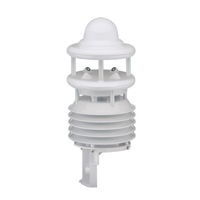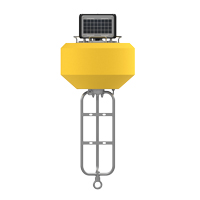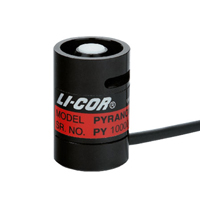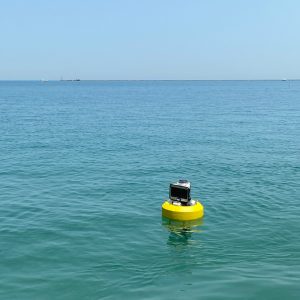 Chicago’s beachgoers travel from near and far to enjoy Lake Michigan’s cool waters during the summer months. Like ocean beach fronts, resource managers work throughout the year to monitor water quality and environmental conditions on freshwater beaches to ensure that people are able to access the resource safely.
Chicago’s beachgoers travel from near and far to enjoy Lake Michigan’s cool waters during the summer months. Like ocean beach fronts, resource managers work throughout the year to monitor water quality and environmental conditions on freshwater beaches to ensure that people are able to access the resource safely.
Maggie Warren, the water quality project manager for the Chicago Park District, monitors the Lake with support from a local university during the beach season and works to publish the data for beachgoers on a daily basis. Water quality, weather conditions, and environmental hazards are monitored and then communicated to the public via a web portal, social media channels, and physical flags at each of the managed beaches.
Challenge: Making Data Available
Chicago is a massive urban center with millions of residents and tourists each year, and reaching everyone with valuable information before they head to the beach is essential. Second, Chicago is a large area with 26 miles of beachfront to monitor, which presents a unique opportunity to analyze the water quality along this stretch of water, and turn the information around in a timely manner.
The beaches must meet the EPA’s water quality recreation criteria, but collecting this data for such a large waterfront is no easy task, but a challenge that the Park District is committed to undertaking because it understands how critical it is to get the information into the hands of the public before they head to the beach. In addition to the water quality concerns, certain weather conditions must be met for the beaches to open to the public, making weather monitoring essential.
While many Chicagoans go to the lake for a relaxing day on the sand, triathlon swimmers and boaters go out onto the open water each day and rely on real-time wave data for safety.
Solution: Discrete Sampling and Real-Time Data
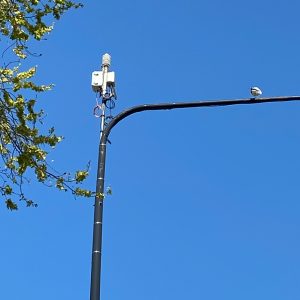 For the Chicago Park District, a combination of real-time monitoring and discrete sampling work in tandem to gather data and publish it to beach visitors in a timely manner.
For the Chicago Park District, a combination of real-time monitoring and discrete sampling work in tandem to gather data and publish it to beach visitors in a timely manner.
A partnership with the University of Illinois-Chicago (UIC) supports spot sampling efforts along the beach and gathers daily samples that are then sent to the lab for analysis. The samples are analyzed for enterococci bacteria, an indicator bacteria similar to E. coli—high levels of which indicate whether the water is safe to swim in, based on the EPA’s standards.
For boaters and athletes interested in heading out to the open water, a CB-25-SVS data buoy reports wave conditions away from the shoreline. The buoy is deployed during the beach season and streams real-time data to the City of Chicago’s data portal, the Chicago Park District website, and Seagull.
Away from the waterfront, the Parks District has several weather stations set up to monitor air temperature, humidity, pressure, precipitation and wind. A Lufft WS600 monitors multiple parameters, and a LI-COR LI-200R monitors solar radiation. Weather data and the daily sampling results help inform beach closures and restrictions whenever necessary for beachgoers’ safety.
Benefits: Redundancies in Communications
Interpretation of the data is shared in the daily beach report as well as communicated via the Chicago Park District’s flag notification system at the beaches. Data is shared via multiple methods, and the goal is to communicate effectively to everyone.
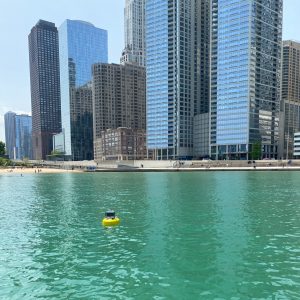 The combination of real-time systems and spot sampling allows Warren to not only paint a clear picture of conditions on the Lake in the moment but also makes trend spotting easier, which helps the Parks District better prepare for the upcoming season.
The combination of real-time systems and spot sampling allows Warren to not only paint a clear picture of conditions on the Lake in the moment but also makes trend spotting easier, which helps the Parks District better prepare for the upcoming season.
The Bottom Line
With the various systems and mechanisms in place that support beach monitoring efforts, a great deal of data is available to the public online. Still, Warren feels it’s important that knowledge of the beach closures and warnings be made readily available for everyone, including those lacking access to web resources.
Warren explains, “Having lots of different types of means for communicating is a way for us to mitigate any potential problems that might arise. By having things be digital and also physically posted at the beaches, it makes it so that even if you’re just showing up at the beach, you’ll be able to be notified.” She continues, “It helps to have lots of redundancies in the system just to mitigate anything that might pop up.”
She affirms, “[Our work] is about making sure that people are safe and able to recreate on the beaches with information easily accessible to make the best decisions for their wellbeing.”
Equipment
The Lufft WS600 Multi-Parameter Weather Sensor simultaneously measures air temperature, humidity, pressure, precipitation & wind with an integrated electronic compass for corrected wind direction on moving platforms.
The CB-75-SVS Wave Buoy offers the latest in real-time wave observations in a compact, affordable, and easy to deploy platform with flexible communications and optional expansion with additional sensors.
The LI‑200R Pyranometer measures total solar radiation. In outdoor sky conditions, the LI‑200R performs comparably to first-class thermopile pyranometers.

